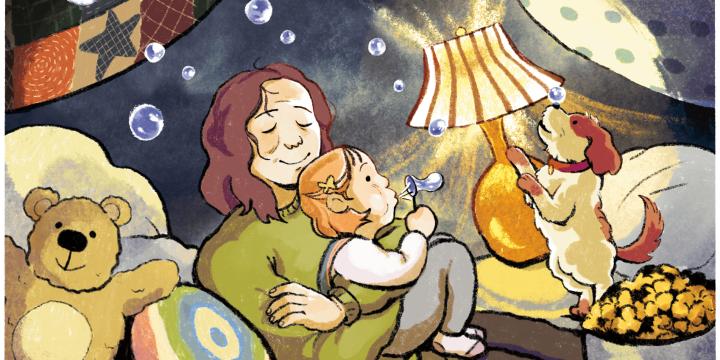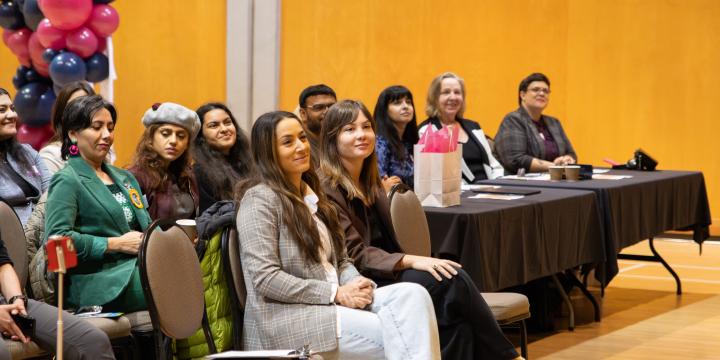
Gender is a nuanced and ever-changing construct. The way we understand and talk about it is evolving and everyone is at a different stage in their learning journey.
When talking about gender, the language we use and how we use it is critical, so a good place to start in understanding the nuances of gender is to correctly understand the range of language associated with it.
What is Gender?
In colonial societies and mainstream western media, we predominantly see gender represented as a binary construct – man or woman - shown as the ways in which someone expresses their sex – male or female.
Yet, the idea that gender is the same as sex assigned at birth is not accurate. And the idea that gender is binary is also not accurate. Gender exists as a spectrum.
The concept of gender as a spectrum is not new to the world. It has long been accepted and celebrated by many cultures in the past and today. For example, Indigenous communities have long had traditions recognizing two spirit individuals – those with both masculine and feminine spirit.
However, the concept is more contemporary in colonial and western societies, with the idea of binary gender, known as ‘the gender binary’, being upheld by the patriarchal and white supremacy foundations of these societies.
Here are some key terms and what they mean:
Sex: Physically assigned at birth. Examples of sex include female, male and intersex. Similar to the gender spectrum, sex is now also understood as a spectrum that includes male, female and intersex traits. All humans have male and female sex hormones and the amounts vary widely between individuals and within a person’s lifetime.
Gender / Gender Identity: How a person identifies. Examples of gender include woman, man, transgender, non-binary, and gender nonconforming.
Cis gender: Identifying with the same gender one was assigned at birth. Note this term can be helpful to differentiate between trans and cis people's needs and experiences.
Transgender: Someone’s whose sex assigned at birth does not match their gender identity. Transgender is meant to be an inclusive term and encompasses a diversity of people. It doesn't necessarily mean that someone has to medically transition, use different pronouns, change their name, or express their gender in a particular way, but some transgender people may do some, or all, of these.
Genderfluid: When someone’s gender expression or identity changes over time. This could be day to day, month to month or even year to year.
Non-binary: When someone’s gender exists within the spectrum of gender rather than as strictly male or female. Non-binary can be a specific way to identify or can be an umbrella term.
Intersex: A general term that is used to describe a condition in which a person is born with reproductive or sexual anatomy, genetic makeup, or hormonal levels that do not seem to fit the ‘typical’ definitions of male or female.
Gender Expression: How a person expresses themselves. Examples of gender expression include masculine, feminine and androgenous. People can express both masculinity and femininity. Gender expression is also shaped by expectations that are not always up to us. Gender expression can shift over a lifetime or in different social situations. Different cultures may also have different concepts for gender.
Gender expression is something both transgender and cisgender people experience and communicate in relation to others. When we talk about being inclusive (for example, respecting someone’s names and pronouns) that includes cisgender folks too. Everyone deserves to feel respected and affirmed however they choose to express themselves.
Pronouns: How a person wants to be addressed. Examples of pronouns include she, her, he, him, they and them. A person decides their own pronouns. Some people may introduce themselves and include their pronouns, and others may choose not to share their pronouns or ask that no pronoun be used (so you would just use that person’s name). Some people may use multiple pronouns (for example, he/they) in which case you should try to use them both/all at different points.
It’s important to note that pronouns do not necessarily indicate someone's gender identity. We have been conditioned to associate "he/him" as masculine and indicating that this person is a man or masc, and "she/her" are for women and people who are femme, but this isn't always the case.
Sexuality: While gender relates to how we identify and express ourselves, sexuality relates to whom a person may be attracted to. Examples of sexuality include straight, gay, bisexual, asexual and pansexual.
Gender and Being an Ally
When it comes to gender, gender identity, gender expression and pronouns, the most important thing is that an individual is able to live freely to express themselves authentically as they are.
Allies can support gender diverse people to live their truth, making them feel seen and heard, by understanding the nuances of gender and using correct language and pronouns. Research shows that validating and affirming pronouns also has a big impact on trans and non-binary people's mental health, so it’s critical that allies understand the importance of using them correctly.
Another way to be an ally is to start using more gender-neutral language in your day-to-day communication with others. This can start by just recognizing some common gendered terms you may use without even realizing it. For example, many might use the phrase “you guys” when referring to a group of people or we might start a formal event by saying “welcome ladies and gentleman”. These phrases can often exclude people who do not fit within the gender binary of male or female.
Here’s some common phrases and how you can reword them:
-
Instead of “you guys”, use: friends, pals, folks, people, ya’ll, or team.
-
Instead of “ladies and gentleman”, use: esteemed guests, all you lovely folks, or everyone.
-
Instead of “police man, fireman, chairman”, use: officer, firefighter, chairperson or chairpeople.
-
Instead of “mankind”, use: humankind, people, or all of us.
Allies can also support trans and gender diverse people by advocating for affirming transition care for trans people of all ages, and by ensuring that conversion therapy practices are banned in all communities. Conversion therapy is the harmful belief that a person’s sexual orientation, gender identity or gender expression can be changed by psychological, physical, or spiritual interventions.
Resources
For further reading, check out the following resources:
-
Trans Care BC – Gender Inclusive Language
-
The Trevor Project - A Guide to Being an Ally for Transgender and Non-Binary Youth
-
Action Canada for Sexual Health Rights: Beyond the Basics Sneak Peek: The Gender Galaxy!
-
Or watch ‘Range of Gender Identities’ below:

